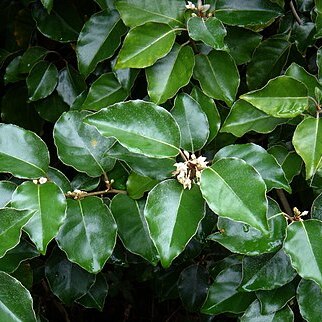A large spreading shrub. It grows 3 m tall. It spreads 3.5 m wide. The leaves are broadly oval and covered with silvery scales. The upper surface becomes green. The flowers are silvery and fragrant. The fruit are red and scaly. They are 3 cm across. They are edible.

